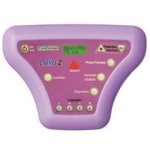
Accidents? We can all make mistakes!
Paramedics and other first-aid workers are often confronted with severe bleeding that can be arrested relatively easily. However, inappropriate approaches are frequent, and sometimes even increase bleeding, or cause other damage to the victim. Medical journalist Karl Eberius MD, asked Dr Edgar Biemer MD, of the Praxisklinik Dr Caspari hospital, in Munich, Germany, and the former head of the…



















